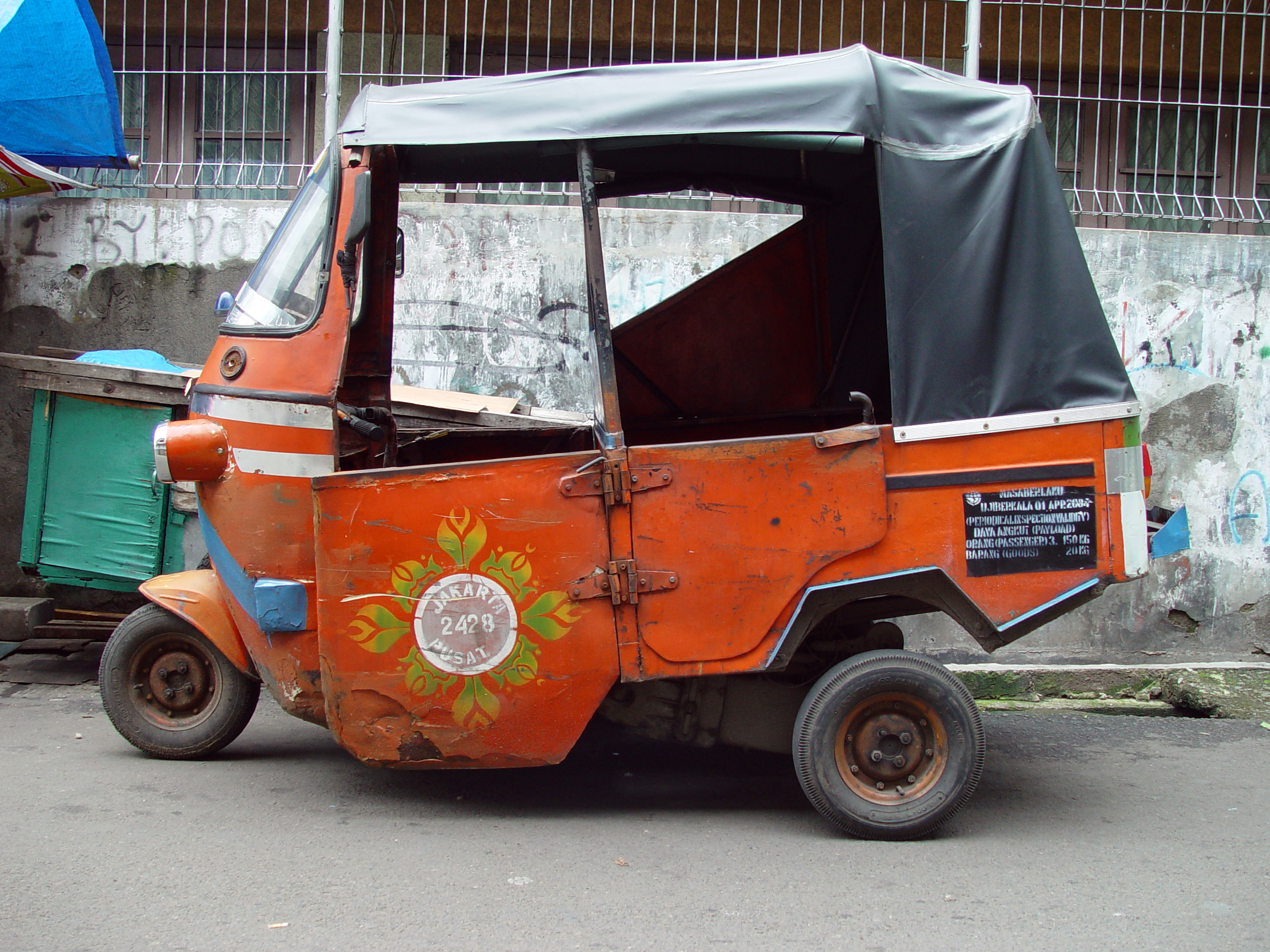

Despite the presence of many wide roads, Jakarta suffers from congestion due to heavy traffic, especially in the central business district. To reduce traffic jams, some major roads in Jakarta have a 'three in one' rule during rush hours, first introduced in 1992, prohibiting fewer than three passengers per car on certain roads.
Jakarta's roads are notorious for undisciplined driver behavior; transportation laws are broken with impunity and police bribery is commonplace. The painted lines on the road are regarded as mere suggestions as vehicles often travel four or five abreast on a typical two-lane road. It is not uncommon to encounter a vehicle traveling the wrong direction in a given traffic flow. Furthermore, in recent years the number of motorcycles on the streets has been growing almost exponentially. The vast sea of small, 100-200cc motorcycles, many of which have 2-stroke motors, create much of the traffic, noise and air pollution that plague Jakarta.
Auto rickshaws, called bajaj (pronounced badge-eye), provide local transportation in the back streets of some parts of the city. From the early 1940s to 1991 they were a common form of local transportation in the city. In 1966, an estimated 160,000 rickshaws were operating in the city; as much as fifteen percent of Jakarta's total workforce was engaged in rickshaw driving. In 1971, rickshaws were banned from major roads, and shortly thereafter the government attempted a total ban, which substantially reduced their numbers but did not eliminate them. An especially aggressive campaign to eliminate them finally succeeded in 1990 and 1991, but during the economic crisis of 1998, some returned amid less effective government attempts to control them.
The TransJakarta service operates on a special bus-line called the busway. The busway network is optimized for busy city routes and is a relatively effective alternative for travel in Jakarta. Construction of the 2nd and 3rd corridor routes of the busway was completed in 2006, serving the route from Pulo Gadung to Kalideres. The busway serving the route from Blok M to Jakarta Kota has been operational since January 2004.
An outer ring road is now being constructed and is partly operational from Cilincing-Cakung-Pasar Rebo-Pondok Pinang-Daan Mogot-Cengkareng. A toll road connects Jakarta to Soekarno-Hatta International Airport in the north of Jakarta. Also connected via toll road is the port of Merak and Tangerang to the west and Bekasi, Cibitung and Karawang, Purwakarta and Bandung to the east.
No comments:
Post a Comment